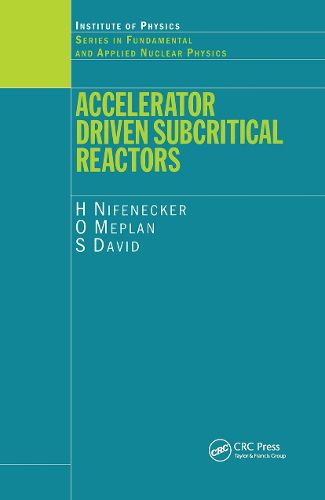Readings Newsletter
Become a Readings Member to make your shopping experience even easier.
Sign in or sign up for free!
You’re not far away from qualifying for FREE standard shipping within Australia
You’ve qualified for FREE standard shipping within Australia
The cart is loading…






Describes the basic knowledge in nuclear, neutron and reactor physics necessary for understanding the principle and implementation of accelerator driven subcritical nuclear reactors (ASDR), also known as hybrid reactors. Since hybrid reactors may contribute to future nuclear energy production, the book begins with a discussion of the general energy problem. It proceeds by developing the elementary physics of neutron reactors, including the basic nuclear physics involved. The calculational methods are presented and discussed, with special emphasis on the Monte Carlo method, which is especially well adapted to the calculation of ASDR and takes full advantage of progress made in computer technology. On the other hand, stress is put on simple analytical models of reactor, which allow one to build a physical intuition of the phenomena involved and are apt to be used as benchmarks for the accuracy of Monte Carlo calculations. The specifics of ASDR are examined, starting from the neutron spallation source to the safety features. A discussion of the fuel evolution follows with its relevance to safety and to the waste production and incineration. The conditions for having a constant reactivity over sufficiently long lapses of time are especially discussed. A number of practical designs which have been proposed are described and evaluated. Finally, the last chapter deals with the examination of proposed and possible waste transmutation policies and the role which could be played by ASDR in this context. The potential advantage of the Thorium cycle is discussed as well as different scenarios, which could be used to implement it.
$9.00 standard shipping within Australia
FREE standard shipping within Australia for orders over $100.00
Express & International shipping calculated at checkout
Describes the basic knowledge in nuclear, neutron and reactor physics necessary for understanding the principle and implementation of accelerator driven subcritical nuclear reactors (ASDR), also known as hybrid reactors. Since hybrid reactors may contribute to future nuclear energy production, the book begins with a discussion of the general energy problem. It proceeds by developing the elementary physics of neutron reactors, including the basic nuclear physics involved. The calculational methods are presented and discussed, with special emphasis on the Monte Carlo method, which is especially well adapted to the calculation of ASDR and takes full advantage of progress made in computer technology. On the other hand, stress is put on simple analytical models of reactor, which allow one to build a physical intuition of the phenomena involved and are apt to be used as benchmarks for the accuracy of Monte Carlo calculations. The specifics of ASDR are examined, starting from the neutron spallation source to the safety features. A discussion of the fuel evolution follows with its relevance to safety and to the waste production and incineration. The conditions for having a constant reactivity over sufficiently long lapses of time are especially discussed. A number of practical designs which have been proposed are described and evaluated. Finally, the last chapter deals with the examination of proposed and possible waste transmutation policies and the role which could be played by ASDR in this context. The potential advantage of the Thorium cycle is discussed as well as different scenarios, which could be used to implement it.